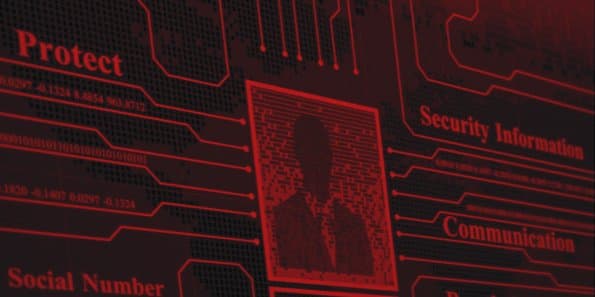There’s much hype around quantum computing and quantum cryptography. That doesn’t mean you should write off these technologies as unimportant. Instead, take a few minutes to understand the basics, how it can improve your security and how to get started.
What Is Quantum Cryptography?
Have you ever come across the intriguing theory of quantum physics? This way of looking at reality has historically been the province of scientists. But advances in computing have brought these technologies to computing.
CSO, a cybersecurity publication, defines the technology as follows:
“Quantum cryptography, also called quantum encryption, applies principles of quantum mechanics to encrypt messages in a way that it is never read by anyone outside of the intended recipient. It takes advantage of quantum’s multiple states, coupled with its “no change theory,” which means it cannot be unknowingly interrupted.”
When this technology arrives, it will have a significant impact on all existing secure communications. First, there are no known methods to break a quantum encrypted message. Second, this type of computing may have the capability to break through existing encryption. In security terms, this technology is like the development of British Royal Navy’s Dreadnought in 1907 – a technology that renders all prior technologies obsolete.
How Quantum Cryptography Will Impact Tactical Communication
In a live tactical situation, you need to focus on the problem in front of you. Whether it is bullets coming at you, a riot, or another threat, you can’t worry about the security of your communications. Historically, maintaining secure communications required significant work effort and equipment. If quantum cryptography pays off, you will get a much higher level of security protection.
According to Space News, quantum cryptography will directly impact critical communications. Specifically, researchers with the US Air Force point out that more secure satellite communication and GPS-free navigation are two benefits. While GPS navigation has become a mainstay in modern communication, it is not always available. Currently, the US Air Force notes that GPS navigation may be disrupted due to “radio emissions in nearby bands, intentional or unintentional jamming, and naturally occurring space weather.” As a result, complete reliance on GPS navigation is problematic. If quantum cryptography can improve navigation technology, that is a significant advance.
Do your tactical communications meet the toughest security standards?
Two Examples of Quantum Cryptography You Need To Know About
With this emerging technology, there are a few early innovations that illustrate the possibilities. It has implications for defending your assets and the usefulness of your present tactics.
- Advancing Radar Technology With Quantum Technology
Modern radar technology relies on principles and concepts developed in the 20th century. This critical tactical technology is long overdue to an update. That’s where recent University of Waterloo research comes in. The researchers found that the “quantum process can outperform a classical version of the radar by a factor of 10, enabling the detection of objects that are faster, smaller, or further away – all while making the radar less detectable to targets.”
If this type of quantum enabled radar technology fulfills its promise, it may render today’s stealth planes and equipment obsolete.
- Defending Against Quantum Cryptography: Highlights from NIST Research
Your enemies are going to get their hands on quantum technology sooner or later. That matters because you need to think through how to defend against the technology. Fortunately, you don’t have to start from scratch. In 2016, the National Institute of Standards and Technology (NIST) published a Report on Post-Quantum Cryptography.
Take note of the NIST’s prediction on the impact of this technology on existing security:
Some experts even predict that within the next 20 or so years, sufficiently large quantum computers will be built to break essentially all public key schemes currently in use [2]. It has taken almost 20 years to deploy our modern public key cryptography infrastructure. It will take significant effort to ensure a smooth and secure migration from the current widely used cryptosystems to their quantum computing resistant counterparts.
As a consequence, NIST is now investigating quantum-resistant encryption algorithms. If this is an essential threat for your organization, we recommend monitoring NIST’s research.
Three Options To Explore Quantum Cryptography
Here’s the good news about quantum technology. You don’t need to earn a Ph.D. or start a private lab to get started. Whether you are in policing, defense or other tactical environments, you need effective ways to explore technology and stay ahead of the curve. To get you started, use these options.
- Exploratory Research
Out of all of the options, this approach brings the lowest risk. You are only going to gather information from public sources, reach out to partners and find out what is possible. For this approach to deliver value, we recommend examining your organization’s technology strategy first. Based on this research, provide a presentation or conduct a workshop to explore how quantum technology will impact your organization’s mission.
- Partnerships
With the partnerships option, you share the risk and rewards of experimenting with quantum computing with another partner. We have already mentioned NIST and the University of Waterloo’s Institute for Quantum Computing. These organizations have access to significant expertise, so reach out to them to explore the options. If you wanted to pursue that approach, consider reaching out to leading institutions in quantum computing. To get the process started, use the links below to reach out to partners.
- Pilot Test
Running a pilot test in quantum cryptography is arguably the best way to explore the technology. However, running a pilot test with quantum technology is likely to cost prohibitive for most organizations in 2019 and 2020. Keep monitoring this space so you can find out about new developments.
What You Need To Do Next
Now, how are you supposed to take action on quantum computing? After all, you’re not running a technology research centre. There are two ways to factor quantum technology and cryptography into your plans. First, add it as a topic for your ongoing monitoring of new threats. Second, add it as an emerging area to monitor your technology strategy. These monitoring strategies will help you to create awareness for quantum and take action when the time is right.














